Fecal Microbiota Transplantation from Mice Receiving Magnetic Mitohormesis Treatment Reverses High-Fat Diet-Induced Metabolic and Osteogenic Dysfunction
- PMID: 40564914
- PMCID: PMC12193155
- DOI: 10.3390/ijms26125450
Fecal Microbiota Transplantation from Mice Receiving Magnetic Mitohormesis Treatment Reverses High-Fat Diet-Induced Metabolic and Osteogenic Dysfunction
Abstract
This study compared the metabolic consequences of fecal microbiota transplantation (FMT) from donor mice that had been either administered pulsed electromagnetic field (PEMF) therapy or exercised to recipient mice fed a high-fat diet (HFD). Eight weeks of PEMF treatment (10 min/week) enhanced PGC-1α-associated mitochondrial and metabolic gene expression in white and brown adipose to a greater degree than eight weeks of exercise (30-40 min/week). FMT from PEMF-treated donor mice recapitulated these adipogenic adaptations in HFD-fed recipient mice more faithfully than FMT from exercised donors. Direct PEMF treatment altered hepatic phospholipid composition, reducing long-chain ceramides (C16:0) and increasing very long-chain ceramides (C24:0), which could be transferred to PEMF-FMT recipient mice. FMT from PEMF-treated mice was also more effective at recovering glucose tolerance than FMT from exercised mice. PEMF treatment also enhanced bone density in both donor and HFD recipient mice. The gut Firmicutes/Bacteroidetes (F/B) ratio was lowest in both the directly PEMF-exposed and PEMF-FMT recipient mouse groups, consistent with a leaner phenotype. PEMF treatment, either directly applied or via FMT, enhanced adipose thermogenesis, ceramide levels, bone density, hepatic lipids, F/B ratio, and inflammatory blood biomarkers more than exercise. PEMF therapy may represent a non-invasive and non-strenuous method to ameliorate metabolic disorders.
Keywords: PEMF therapy; ceramides; gut microbiome; non-alcoholic fatty liver disease (NAFLD); non-alcoholic steatohepatitis (NASH); obesity; osteogenesis.
Conflict of interest statement
A.F.O. is an inventor of patent WO 2019/17863 A1, System and Method for Applying Pulsed Electromagnetic Fields, and is a co-founder of QuantumTx Pte. Ltd. Other authors declare that they do not have competing interests.
Figures
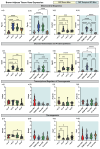
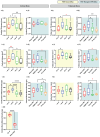

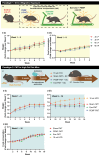
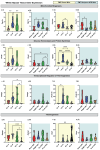
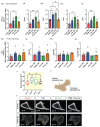


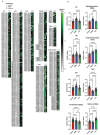
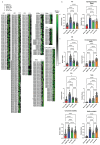
Similar articles
-
Young gut microbiota transplantation improves the metabolic health of old mice.mSystems. 2025 Jun 17;10(6):e0160124. doi: 10.1128/msystems.01601-24. Epub 2025 May 30. mSystems. 2025. PMID: 40444969 Free PMC article.
-
Fecal microbiota transplantation for the treatment of recurrent Clostridioides difficile (Clostridium difficile).Cochrane Database Syst Rev. 2023 Apr 25;4(4):CD013871. doi: 10.1002/14651858.CD013871.pub2. Cochrane Database Syst Rev. 2023. PMID: 37096495 Free PMC article.
-
Fecal microbiota transplantation ameliorates high-fat diet-induced memory impairment in mice.J Neurochem. 2024 Sep;168(9):2893-2907. doi: 10.1111/jnc.16156. Epub 2024 Jun 27. J Neurochem. 2024. PMID: 38934224
-
Electrotherapy modalities for rotator cuff disease.Cochrane Database Syst Rev. 2016 Jun 10;2016(6):CD012225. doi: 10.1002/14651858.CD012225. Cochrane Database Syst Rev. 2016. PMID: 27283591 Free PMC article.
-
Effects of children's microbiota on adipose and intestinal development in sex-matched mice persist into adulthood following a single fecal microbiota transplantation.Mol Metab. 2025 Jul;97:102157. doi: 10.1016/j.molmet.2025.102157. Epub 2025 Apr 25. Mol Metab. 2025. PMID: 40288637 Free PMC article.
References
MeSH terms
Substances
Grants and funding
LinkOut - more resources
Full Text Sources
Medical

